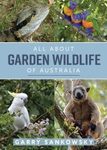"Lavishly presented with illustrations on almost every page, this book provides a fascinating insight into a lively place remote from most people's experience of the Australian continent."
- Richard J. Martin, Historical Records of Australian Science, pp.342, 2013
"It is a journey to another country that will fill you with wonder."
- Aboriginal Art & Culture Blog, May 2013
"By combining artistic, scientific, and indigenous views, Desert Lake provides a smorgasbord of colour, culture, information, and insight."
- Cathie Clement, Boab Bulletin, pp. 5, April 2013
"Mixing Aboriginal screenprints, poetry, archaeological findings and scientific discourse, this is a truly unique coffee table book about the land and life around Lake Gregory (Paruku) in the Kimberley [...] its method of interweaving the first-person tales of visiting scientists and long-term residents forces you to think about the Aboriginal-European cultural interface in an enjoyable way [...] Academics will enjoy the extensive footnotes but, for me, it's the collection of colourful canvas maps and personal revelations of the researchers that impresses."
- Wild, pp. 73, July-August 2013
"Visually the book is a delight: the Aboriginal paintings and landscape photographs in particular seem to leap from the page. What also emerges is the value of a collaborative approach, and the way that the landscape itself (like the Aboriginal paintings) can be seen to hold many layers of meaning. The interpretations of Indigenous custodians and scientists are not always compatible; however, Desert Lake combines them in a way which is always respectful and sometimes surprisingly complementary." For anyone who enjoyed Yiwarra Kuju, and anyone interested in the interaction of science and traditional cultures, this book is a must.
- Scott Mitchell, Explore, Vol 35(2), p. 26, 2013
"Desert Lake is a triumph of cross-cultural work, both in the activities that it describes and in the making of the book itself. And it is a work of remarkable beauty in its lavish photography of the region's natural wonders, and in the reproductions of masterful artworks created by the Walmajarri, by kartiya artists, and by the two groups working on often astonishing collaborations that combine aesthetic excellence, narrative, poetry, and scientific observation."
- Aboriginal Art and Culture: An American Eye, May 12 2013
"As a thoughtful compilation of many voices, it succeeds. And as a companion for future generations, I wager it will also succeed. For it feels rich and generous and full of good spirit"
- Sally Dixon, Aboriginal History – Volume thirty seven, 2013
"The photographs and reproductions of the artworks are excellent, and Native terms are fully explicated. These various genres combine to provide a living portrait of a total natural and social ecology. This will be a very useful volume for ecology, anthropology, and art collections."
- D. S. Azzolina, Choice, December 2013 Vol. 51 No. 04



































